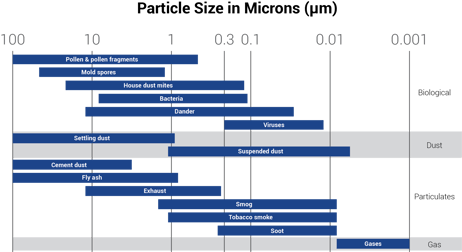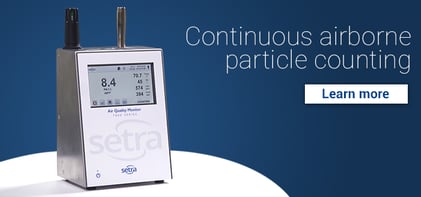Nosocomial infections (also known as Hospital-Acquired Infections, Healthcare-Associated Infections, or HAIs) can result in otherwise avoidable extended hospital stays, readmittance, follow-up treatments, and even death. HAIs can often spread via airborne transmission, which emphasizes the need for proper room pressurization to contain hazardous particles. Operating rooms (ORs) are an area where patients are especially at risk for contracting infections. 2.5µm particles are an important leading  indicator of the potential presence of contaminants that could put the patient at risk. The best opportunity to manage the risk of infections is by limiting 2.5µm particles in a space.
indicator of the potential presence of contaminants that could put the patient at risk. The best opportunity to manage the risk of infections is by limiting 2.5µm particles in a space.
ANSI/ASHRAE/ASHE Standard 170-2017 provides guidance for HVAC in healthcare facilities including hospitals, especially regarding HEPA filters and air changes per hour (ACH). A sufficient air change rate with a clean, filtered air supply minimizes the presence of hazardous or infectious microbials in the space.
When creating a safe environment for patients in a critical space like an OR, particle counting is crucial for maintaining a high level of protection. Measuring particle levels allows for detection of leaks or cracks and prevents an OR and patient health from being severely compromised. Elevated particle counts can be an indicator of the presence of microbials in real time w ithout the multiple-day processing time of a traditional microbial air sampler. Continuous particle monitoring is essential for maintaining a critical environment. Setra's SPC5000 wall-mounted particle counter is well suited to provide real-time monitoring of particulate counts in a critical environment.
ithout the multiple-day processing time of a traditional microbial air sampler. Continuous particle monitoring is essential for maintaining a critical environment. Setra's SPC5000 wall-mounted particle counter is well suited to provide real-time monitoring of particulate counts in a critical environment.



